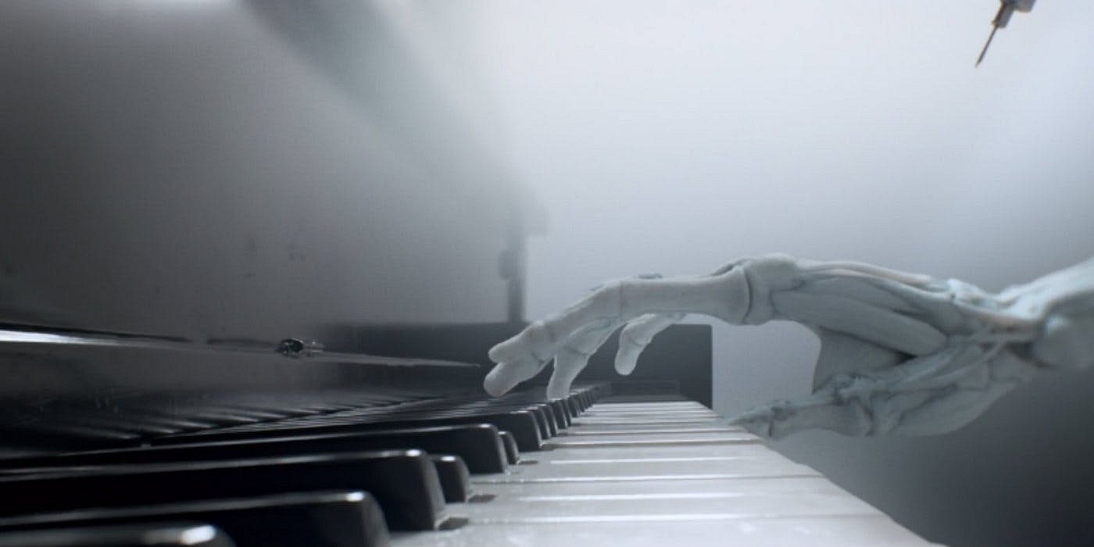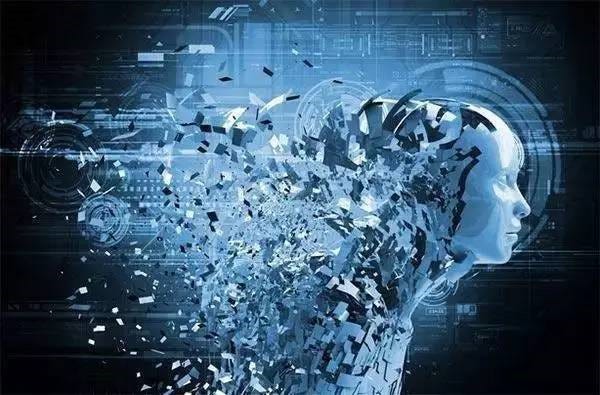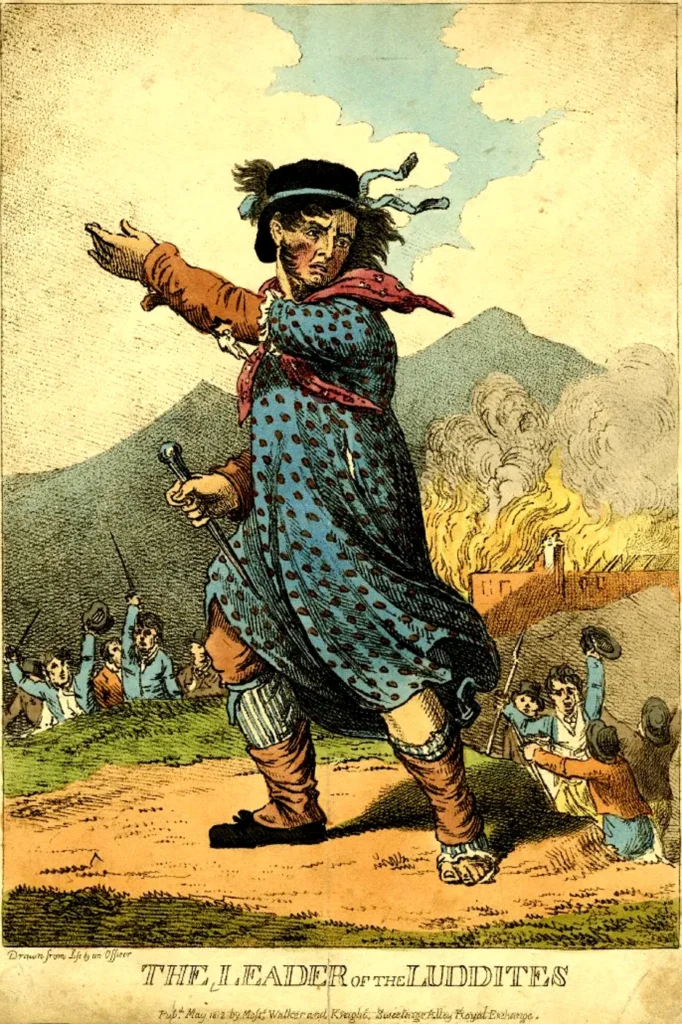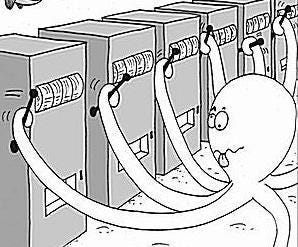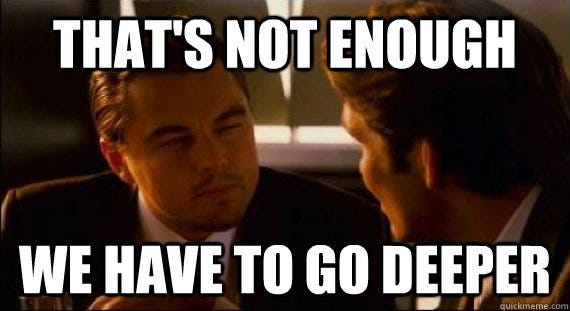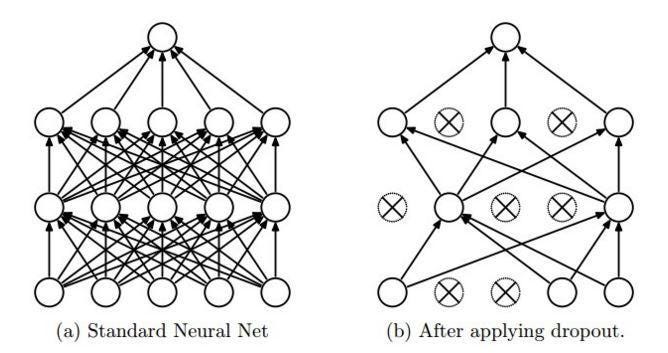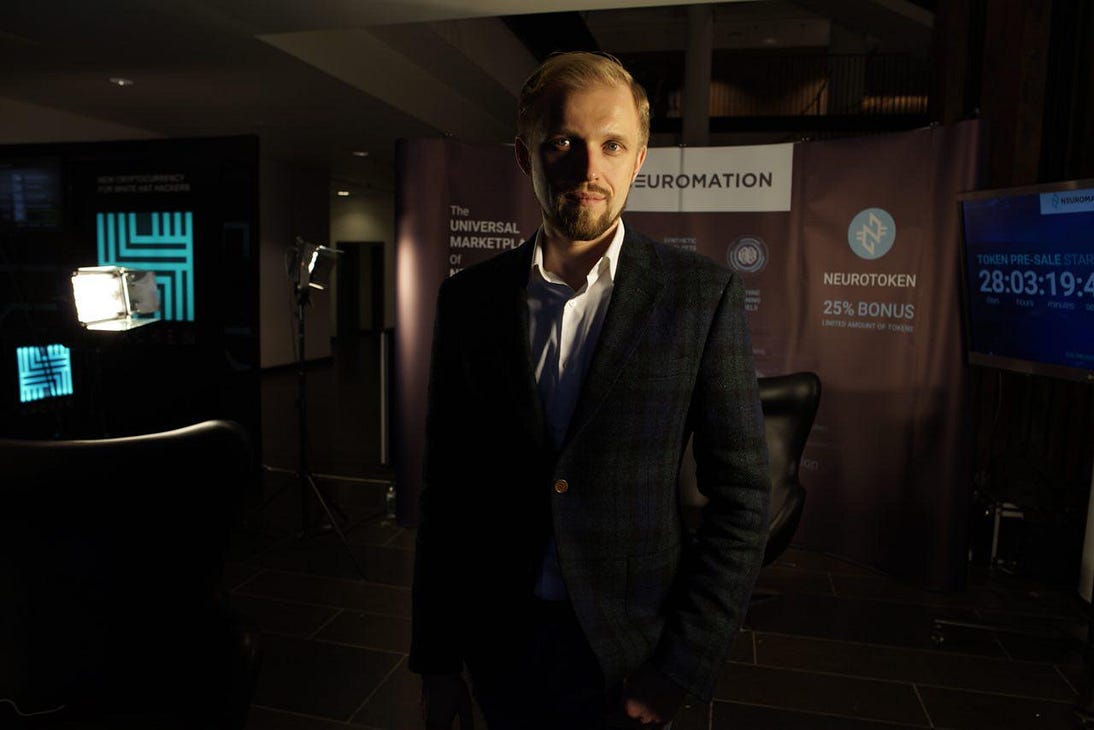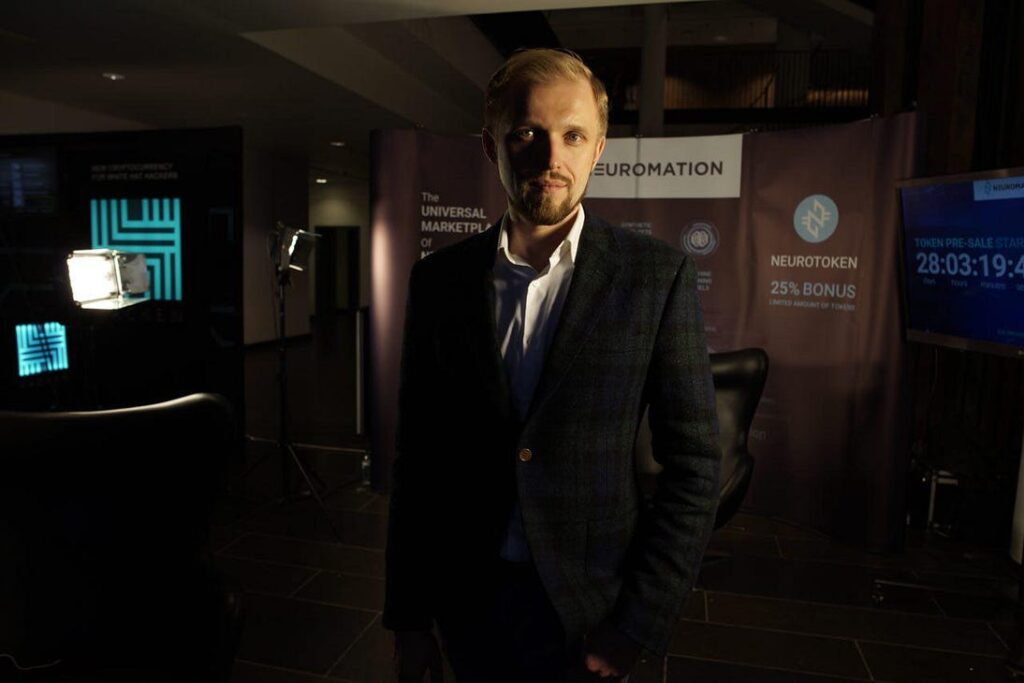[translated from the Russian version by Andrey V. Polyakov]
Recently, a new round of conversations about self-moving carriages and other potential achievements of artificial intelligence has again posed one of the classic questions of humanity: who will be marginalized by the monorail track of the next technological revolution? Some studies argue that artificial intelligence in the near future would lead to a surge of unemployment comparable to the Great Depression. In the first part of the series, we have started from the very beginning, the Luddites, and have reviewed the influence of automation onto several occupations, which have, as result, drastically changed or even disappeared. Today we will first discuss a more creative part of the spectrum, and then we will see where does the current wave of automation fear comes from.
Creative occupations
All teaching machines would be plugged into this planetary library and each could then have at its disposal any book, periodical, document, recording, or video cassette encoded there. If the machine has it, the student would have it too, either placed directly on a viewing screen, or reproduced in print-on-paper for more leisurely study.
Isaac Asimov. The New Teachers (1976)

In the first part we have seen how the global automation has happened in the past, starting with the Luddites fighting against the first industrialization and finishing with the extinct occupations like elevator operator and computist. We have seen that so far the automation of various occupations was not total, but partial, resulting in the increase, rather than reduction, of the demand for respective professionals.
Usually, the partial automation transforms an occupation towards a more “human”, creative content. But what about the occupations that are creative per se? Does automation shrink the creative markets today?
Let us review, for example, the musician occupation. In the 19th century, with no sound recording technologies, the demand for musicians was stable: whenever you wanted to listen to good music, a live musician, or a small orchestra for major pieces, was required. A decent musician always had job, not just performers but composers too: Johann Sebastian Bach, as per contract with the Thomaskirche (St. Thomas Church) in Leipzig, was supposed the write a new cantata every week, literally any given Sunday. A church in nearby Magdeburg employed another composer, not necessarily on the Bach’s level.
However, in the early 20th century people started to listen to gramophone music, and, with the advent of sound movies, even the pianists were outdated. Today, in Leipzig or Magdeburg, they still play Bach, and anybody can listen to Goldberg Variations absolutely free, brilliantly performed and on instruments, Bach could not even dream of (the modern grand piano is far beyond the claviers of that time; though finding records of an “original” instrument is not difficult at all too).
Does this mean that the demand for the musician’s profession has disappeared, and today some dozen composers and orchestras around the world provide for all the needs of new music, the rest of the work being done by mass replication (which, according to the same logic, should also be concentrated in the hands of several major labels)? Not at all: there are even more musicians, composers, and performers! Modern development of technologies (not only in sound recording, but also in communications) allowed that the most diverse musicians find their audience, all flowers blossomed, and today more people can earn their living by music than in the past. The top of this pyramid earns far more than Prince Leopold von Anhalt-Köthen, who was once a patron of the same Johann Sebastian, but also the “middle class” is very far from poverty. Furthermore, even the projections of employment are quite favorable. This applies to the performers too: the sound recording did not kill the “excessive” musicians, but, on the contrary, allowed more people to learn about them, raising the demand for live concerts.
The same applies to the other creative occupations. It even surprises me a bit: we can download almost any book for free, there are certainly enough good books for a whole life of reader of any taste, but hundreds of thousands of authors all over the world write and successfully sell their works, not only in new genres (one can believe that a fan of slash-fanfics can hardly be satisfied by Dostoevsky — although…), but also in quite traditional ones.
But enough of history. Let us now talk about whom robots will actually replace in the nearest future, and why this should not be so feared.
Threat or benefit?
How far has gone “progrès”? Laboring is in recess,
And mechanical, for sure, will the mental one replace.
Troubles are forgotten, no need for quest,
Toiling are the robots, humans take a rest.
Yuri Entin. From the movie Adventures of Electronic

Elevator operators, computists and weavers perfectly symbolize those activities that have been automated so far: technical work, where the output result is expected to maximally match certain parameters, and creativity is not only difficult, but forbidden and, in fact, harmful. Of course, an elevator operator could smile to his passengers, or the computer girl could, having scorned potential damage to her reputation, get acquainted with Richard Feynman himself. But their function was to accurately perform clear, algorithmically defined actions.
I will allow myself a little emotion: these are exactly the kinds of activities that must be automated further! There is nothing human in following a fixed algorithm. Monotonous work with a predetermined input and output is always an extreme measure, the forced oppression of the human spirit in order to achieve certain practical goal. Moreover, if the goal can be achieved without wasting real live human time, that is the way to proceed. As, for example, has happened to weavers and bank employees, when the first stopped performing the machine functions, and the latter — the ones of ATM.
Therefore, I believe that the ongoing narrative about how terrible it would be when a huge army of truckers is replaced by driverless vehicles is not just groundless, but counterproductive. Moving a vehicle from point A to point B is exactly the most typical example of a monotonous strictly algorithmic task, which shall not, if possible, be performed by a human being. There will be no huge social problem either: people who like to fiddle with cars and similar equipment will for sure find jobs in service and maintenance. Similarly, there was no social revolution, when grooms and coachmen lost their relevance — they just switched to other occupations. And percentagewise there was no less of them than truckers.
By the way, I cannot help recalling here an important maxim of show business: “The Simpsons did it first”. The best animated series ever has depicted the influence of unmanned vehicles on truckers… back in 1999, in the Maximum Homerdrive episode (video clip, description in Russian).
Curiously, by the way, the most popular Russian example of a “mass low-skilled occupation”, watchmen and security guards, is not directly exposed to any threat, because their function is not so much monotonously checking documents (it has been ubiquitously automated long time ago), rather than communicating with people whose documents are not in order. Moreover, this is yet long way from being automated.
However, at first glance, it seems that now it comes to the fact that computers are beginning to gradually replace people in areas that were previously considered human prerogative. For example, since 2014, Facebook has been able to recognize faces as well as humans do, and computer vision technologies continue improving; they were partly behind the emergence of driverless vehicles. A lot of modern publications predict social collapse and 50% and even higher unemployment.
Is that correct? Where did this sudden surge of interest to automation come from, while, after all, artificial intelligence has been progressing for a very long time? Let us figure it out.
On the nature of fears
There is no indispensable man.
Woodrow Wison; and Stalin, apparently, never said it.
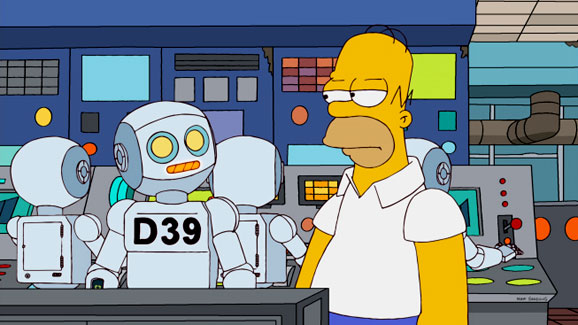
Many popular articles on the horrors of automation actually go back to the same publication: in 2013, the researchers from Oxford Carl Benedikt Frey and Michael A. Osborne have published a paper titled The Future of Employment: How susceptible are jobs to computerisation? In that paper they come to an ambitious conclusion that about 47% of total us employment is at risk. They have later conducted a similar study based on data from Great Britain, and the resulting numbers were no less frightening. However, let us try to figure out in detail where do this numbers come from.
As a practicing scientist in the field of machine learning and data analysis, I cannot bypass the actual methodology of Frey and Osborne. It was the following:
- Frey and Osborne have gathered a group of machine learning researchers and labelled 70 assorted occupation by answering, for each one, a binary question: is the occupation automatable in the near future or not; such labelling was made based on a special classifier describing occupations and their related tasks;
- Then they have identified nine variables that describe each occupation based on the required dexterity, creativity and social interaction;
- They have built created several classifiers and trained them to predict the “automatability” labelled on the first stage based on those nine variables; the best one proved to be the Gaussian process classifier;
- And finally, they used the classification for all 702 occupations, thus obtaining their alarming results.
I have nothing against Gaussian processes — it is a very intelligent classification method for such case, when the sample is very small. However, it is important to understand that the data for this classifier were labelled by humans, and it represented their subjective assumption as to automatability of a particular occupation.
I am far from applying to the research by Frey and Osborne of the main principle of data analysis: “garbage in — garbage out”. The popular articles, although, which often state simply “Frey and Osborne… studied 702 occupations, using a Gaussian process”, and then refer to the conclusions as a scientific result, are also obviously cunning. Even if the classifier were ideal (which is hardly the case — too little and too rough criteria), it would not answer the question, weather a given occupation is automatable, but rather a far less impressive one: “Do the people who have labelled the initial 70 occupations from the Frey and Osborne sample data consider that occupation automatable too?”
Although Frey and Osborne write that “the fact that we label only 70 of the full 702 occupations… further reduces the risk of subjective bias affecting our analysis”, the reality is that no data analysis can add here any “scientific objectivity”. It is still an arbitrary assumption of the researchers, just instead of judgmental evaluation of occupations they have produced a judgmental evaluation of the particular properties (attributes) and have automatically extended their assumption from 70 to all 702 occupations — there is a certain irony in such automation, is not it? They could, by the way, have labelled them all manually, seven hundred are not seven hundred thousand, after all…
There were also other studies, but essentially, in such a futurologic issue, there is no method, other than expert survey. Moreover, the experts, unfortunately, provide extremely, if not excessively optimistic forecasts too. And this happens despite the fact that in artificial intelligence great promises have been heard since the first years of its existence as a science, but very rarely come true. When in the late 1950s Frank Rosenblatt created the first perceptron, the simplest model of machine learning, the New York Times (not any tabloid!) wrote the following: “Perceptrons will be able to recognize people… and instantly translate speech in one language to speech or writing in another language.” As you can see, the recognition succeeded only in more than half century, and the “instant translation” did not work out so far.
Such exaggerated expectations have already caused two “winters of artificial intelligence”: first in the late sixties, it became clear that the “instant translation” would not be reached very soon, and then the second wave of the hype ended similarly in the late 1980s. And now we are living through the third wave of the artificial intelligence hype. And I am afraid that if the frightening forecasts continue to increase and the wave of hype turns into a tsunami, we, the researchers in the field of machine learning, will again have to recall the House Stark family motto…
The current wave, of course, did not come out of nowhere: the achievements of modern models of machine learning are really stunning, and they still continue further. Is, however, the modern machine learning really ready to completely replace people in the mass occupations? This will be discussed in detail in the next part of our series.
Sergey Nikolenko
Chief Research Officer, Neuromation
